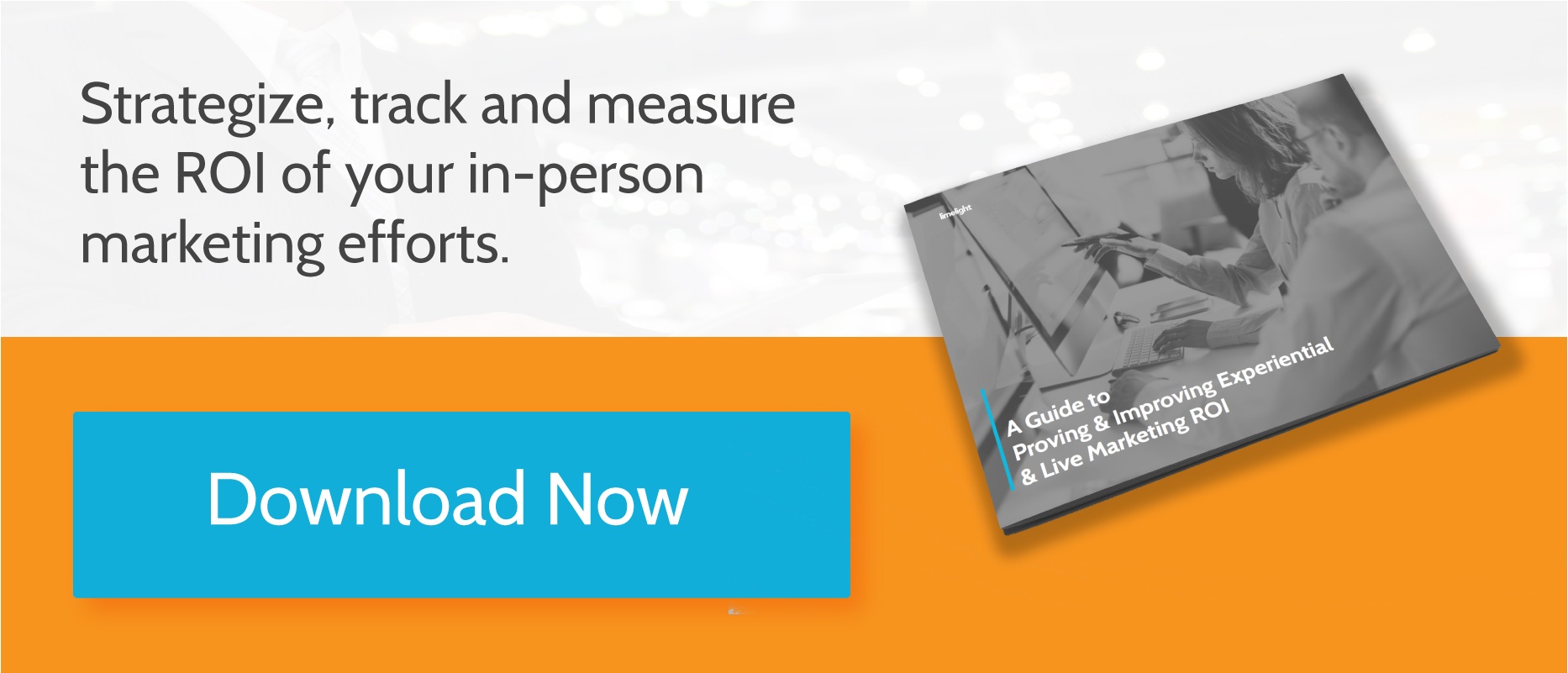Successful Brands Are Using These 3 Experiential Techniques to Activate Consumers in 2017
.png?width=50&name=download%20(1).png) By
Julia Manoukian
·
3 minute read
By
Julia Manoukian
·
3 minute read
2017 was a massive year in tech. Apple released the iPhone X, while Google Home and Amazon Echo sparred over the smart speaker market. When it came to experiential marketing, more brands used the latest tech to generate customers and boost revenue. These companies utilized up-to-the-minute digital solutions to increase the visibility of their brand and move more prospects through the sales funnel. The most successful brands mastered these digital experiential techniques in order to activate more customers.
1. Companies are Encouraging Customers to Share Content on Social Media
Social media and experiential advertising are a match made in marketing heaven. Ninety-eight percent of consumers capture content at live events, while 100 percent of people who capture content share it on their social media pages, according to one study. As a result, 32 percent of brands incorporate content from live events into their traditional media campaigns, while 77 percent of companies post content from live experiences on social media.
Brands are now partnering with social networks to create unique experiences for their customers. Take perennially-popular music festival Coachella, for example, which teamed up with Snapchat in 2015. Festival goers could use various geo-filters that told their friends which musical act they were watching. The new feature proved successful — and resulted in more ticket holders sharing content with their networks.
Other examples of the merging of experiential and social marketing include makeup brand Benefit Cosmetics, who use live streaming app Periscope to develop brand equity with their existing customers. This company hosts makeup tutorials on the app and attracts more than 2,000 people every time they stream content. This is a great example of a company that engages well with its audience by using the latest digital technology. Both Coachella and Benefit Cosmetics boosted customer activations by utilizing social media apps.
"Social media is the perfect place to get attendees excited well in advance of an event," says Adweek. "Make any official announcements on various social media pages and ask employees and supporters to share. Tag anyone who will be presenting or speaking at the event. Work with those people on promotion so you can broaden your reach to all their followers."
2. Companies are Putting a Greater Focus on Millennials
More than three in four Millennials prefer to spend money on an experience or event instead of purchasing something desirable, while 55 percent say they are spending more money on live experiences than ever before. As a result, brands are using experiential marketing to target this lucrative demographic.
Red Bull knows how to reach a young, social-savvy audience. In 2012, the drinks manufacturer worked with Austrian skydiver Felix Baumgartner during their Red Bull Stratos campaign, a space diving project that tried to break the record for the highest-altitude jump in history. Red Bull publicized this event on its social media channels and live-streamed the space jump on its website, generating much media buzz. The result? More Millennials engaged with the brand. Moreover, Red Bull's revenue spiked.
The company sold 5.2 billion cans worldwide in 2012 — 13 percent more than the year before. This is the ultimate example of segmented experiential marketing that resulted in stratospheric sales and customer activations. "Personal interactions, athlete sponsorship, event participation and word-of-mouth has always been a part of our DNA," said Arun Hozack, Red Bull North America's VP of Marketing.
"Millennials are prioritizing their cars and homes less and less, and assigning greater importance to personal experiences — and showing off pictures of them," says Uptin Saiidi, writing for CNBC. "It's a trend that's ultimately helping fuel growth of billion-dollar-plus start-ups like Uber, WeWork and Airbnb."
3. Companies are Investing More Money in VR
Virtual reality (VR) has become a hot tech trend, thanks to the popularity of games like Pokemon Go. Now, experiential marketers are using this technology to boost customer activations. Earlier in 2017, Irish alcohol brand Guinness teamed up with British supermarket chain Tesco and created a unique VR beer tasting experience. Supermarket shoppers could taste three new beers and sense movements, sounds, textures and colors via a VR headset. This experiential campaign proved popular and helped Guinness introduce their beer to a whole new audience.
More companies are investing in VR for customers who can't attend a live event, too. Greenfish Labs, for example, partnered with the Hershey Bears to provide ice hockey fans with virtual 360-degrees views of live games. "VR is being strategically used as a tactic to demonstrate product attributes, features and functionality; communicate the brand’s mission at point of sale; immerse users in a branded entertainment experience and add excitement at pop-up events for social media sharing; and help consumers make more informed choices so they’ll be happier with their purchases [among other things]," says Michelle Greenwald, writing for Forbes.
These three customer activation techniques prove the power of experiential marketing. Brands are using the latest digital solutions to attract more customers to their brand, increase sign-ups and subscribers and shift more products. Conventional marketing strategies no longer produce the same results. Brands in all niches, therefore, should invest in experiential marketing in 2018 for more effective promotions.


